Women in Victorian Society Worksheets
Do you want to save dozens of hours in time? Get your evenings and weekends back? Be able to teach about Women in Victorian Society to your students?
Our worksheet bundle includes a fact file and printable worksheets and student activities. Perfect for both the classroom and homeschooling!
Resource Examples
Click any of the example images below to view a larger version.
Fact File
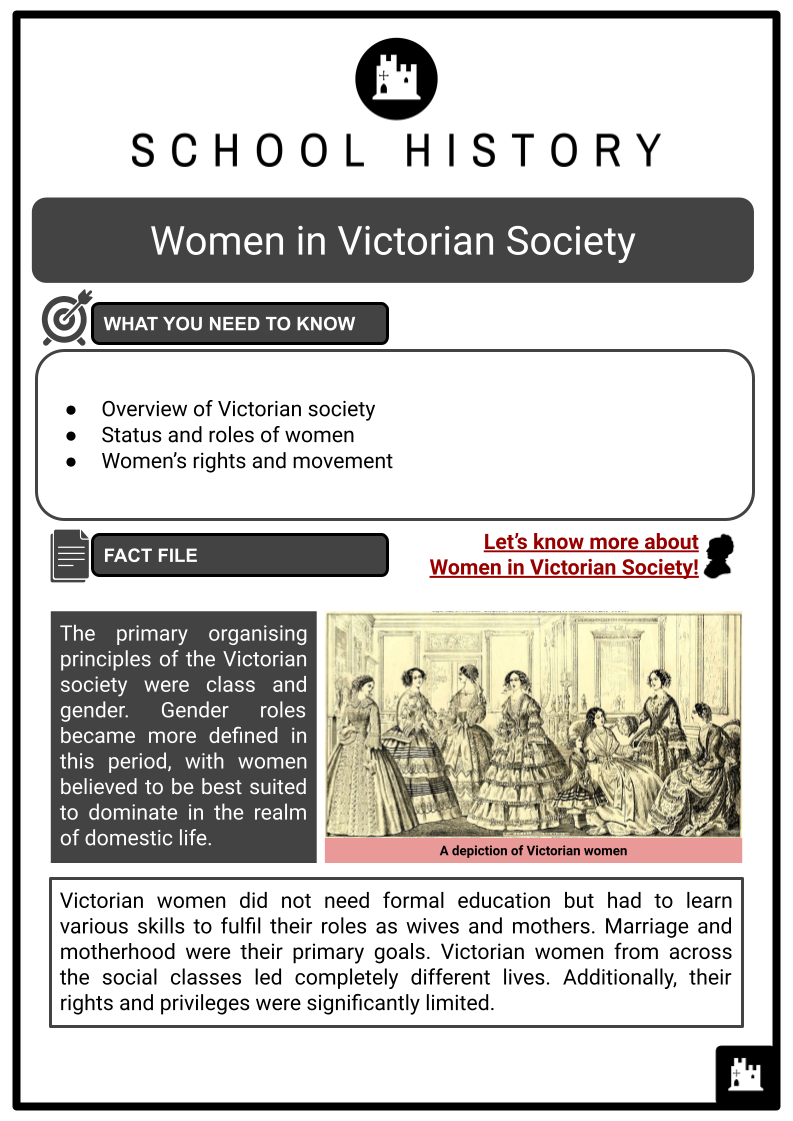
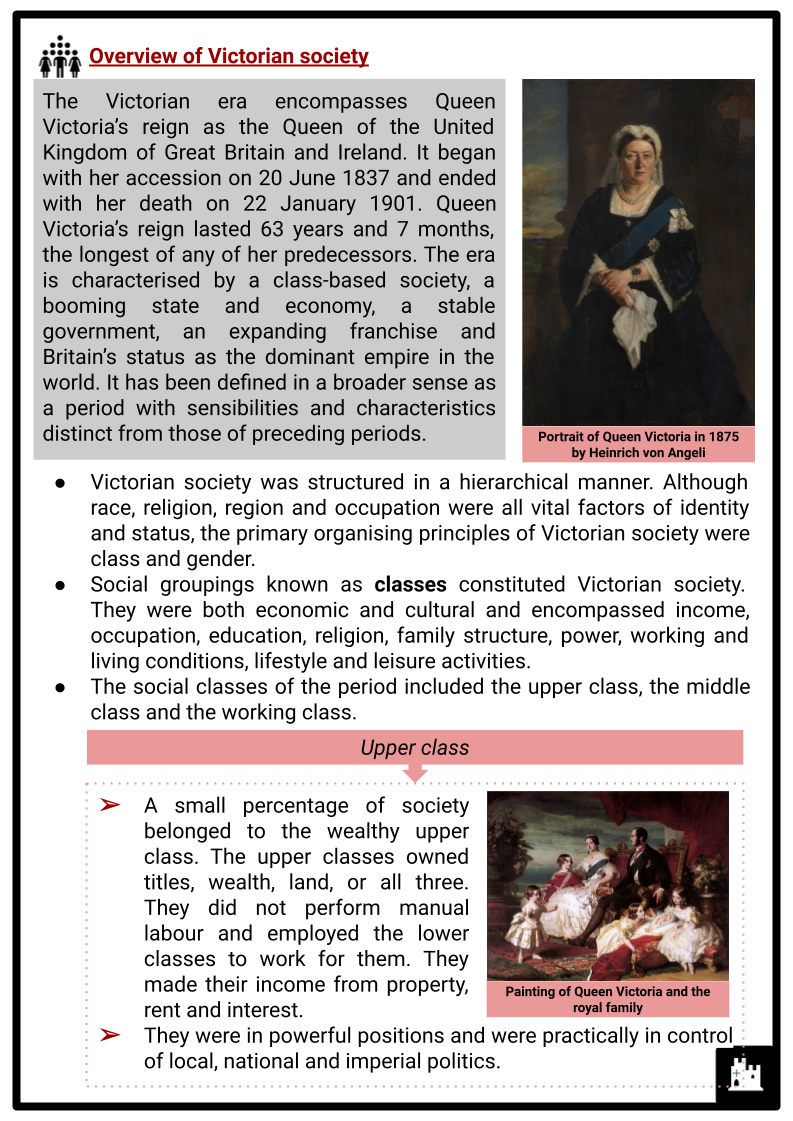
Student Activities
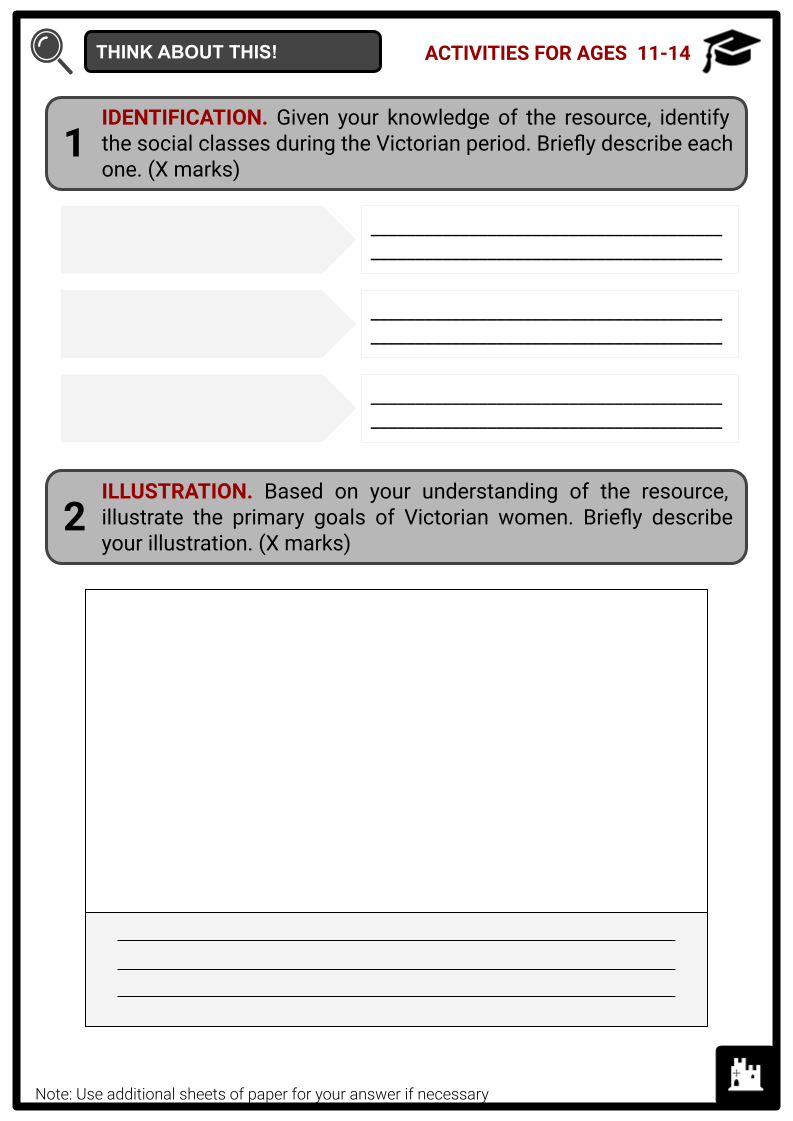
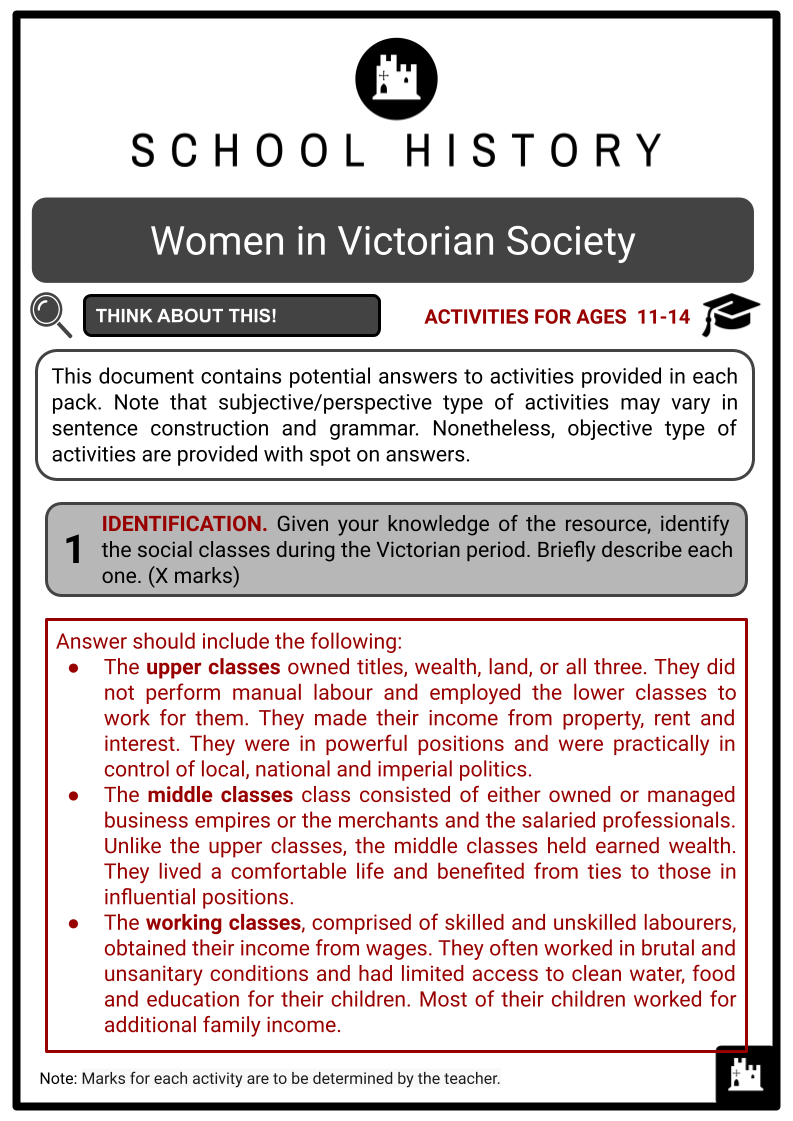
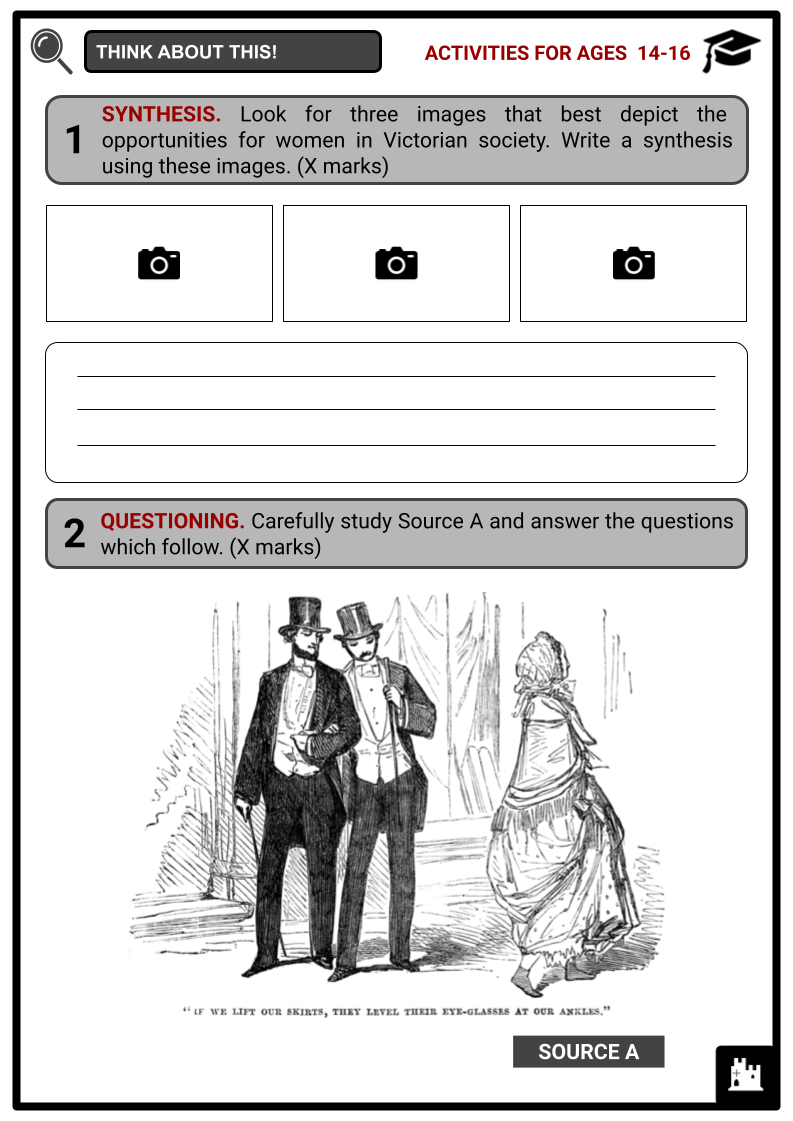
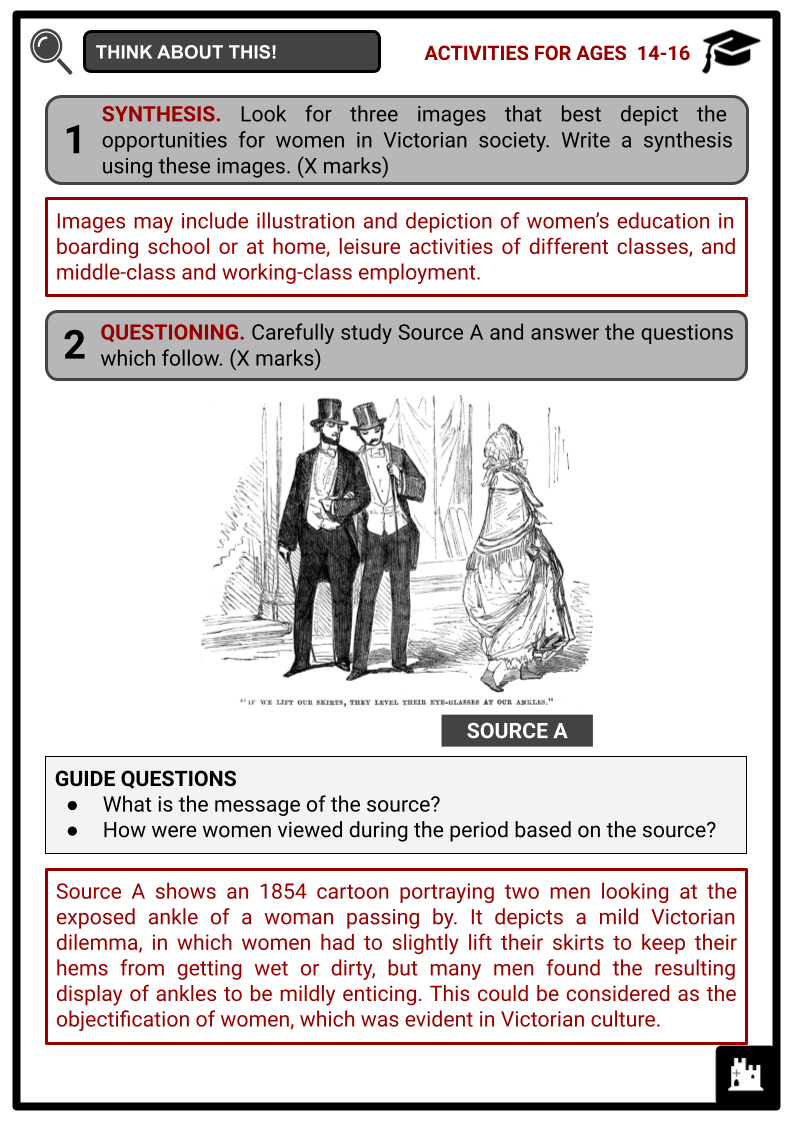
Summary
- Overview of Victorian society
- Status and roles of women
- Women’s rights and movement
Key Facts And Information
Let’s know more about Women in Victorian Society!
The primary organising principles of the Victorian society were class and gender. Gender roles became more defined in this period, with women believed to be best suited to dominate in the realm of domestic life. Victorian women did not need formal education but had to learn various skills to fulfil their roles as wives and mothers. Marriage and motherhood were their primary goals. Victorian women from across the social classes led completely different lives. Additionally, their rights and privileges were significantly limited.
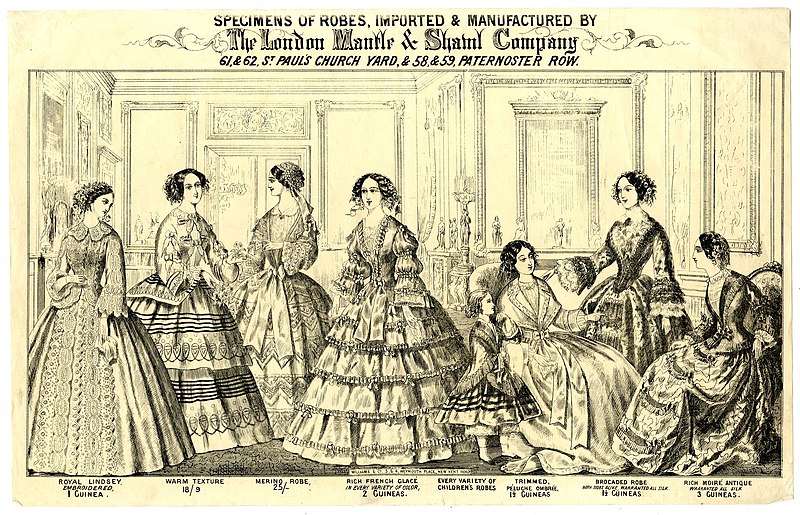
Overview of Victorian society
- The Victorian era encompasses Queen Victoria’s reign as the Queen of the United Kingdom of Great Britain and Ireland. It began with her accession on 20 June 1837 and ended with her death on 22 January 1901. Queen Victoria’s reign lasted 63 years and 7 months, the longest of any of her predecessors. The era is characterised by a class-based society, a booming state and economy, a stable government, an expanding franchise and Britain’s status as the dominant empire in the world. It has been defined in a broader sense as a period with sensibilities and characteristics distinct from those of preceding periods.
- Victorian society was structured in a hierarchical manner. Although race, religion, region and occupation were all vital factors of identity and status, the primary organising principles of Victorian society were class and gender.
- Social groupings known as classes constituted Victorian society. They were both economic and cultural and encompassed income, occupation, education, religion, family structure, power, working and living conditions, lifestyle and leisure activities.
- The social classes of the period included the upper class, the middle class and the working class.
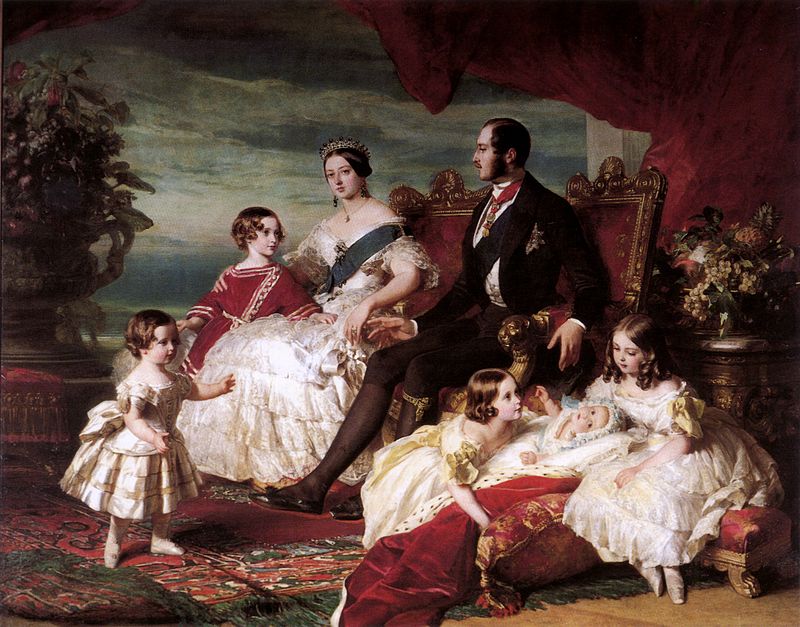
Upper class
-
- A small percentage of society belonged to the wealthy upper class. The upper classes owned titles, wealth, land, or all three. They did not perform manual labour and employed the lower classes to work for them. They made their income from property, rent and interest.
- They were in powerful positions and were practically in control of local, national and imperial politics.
Middle class
-
- The rapid growth of the cities and trade and economy due to industrialisation led to the expansion of the middle class or the bourgeoisie. This class consisted of either owned or managed business empires or the merchants and the salaried professionals.
- Unlike the upper classes, the middle classes held earned wealth. They were paid well and were able to afford properties.
- They lived a comfortable life and benefited from ties to those in influential positions. They held some political power and were regarded as the moral leaders of society.
Working class
-
- The working class made up the majority of the population during this period.
- The working classes, comprised of skilled and unskilled labourers, obtained their income from wages. They often worked in brutal and unsanitary conditions and had limited access to clean water, food and education for their children. Most of their children worked for additional family income.
- They had their own culture separate from the wealthier classes and were excluded from political affairs.
- The class-based hierarchical structure remained relatively stable despite frequent and increasingly violent upheavals during this period.
- Another fundamental component of Victorian society was gender, as it was believed to be biologically based and to determine almost every aspect of an individual’s potential and character.
- The Victorian gender ideology was founded on the ‘doctrine of separate spheres’, which dictated that men and women had distinct ‘natural’ characteristics and were therefore meant for different roles.
- Men and women were expected to fulfil their roles without complaint. Consequently, the place of women in society was sharply defined during this period.
- Although the majority of working-class families were unable to live out the doctrine of separate spheres since earning more wages was deemed more important for the family, the ideology remained influential across all classes.
Status and roles of women
- According to the ideology of men and women occupying separate spheres, men were viewed to be physically stronger and so suited to jobs that required strength and resilience. Meanwhile, women were thought to be physically and emotionally weaker but morally superior and so suited to dominate in the realm of domestic life, raising children and focusing on religion and moral behaviour.
Education
- During the Victorian period, women did not necessarily need a formal education to fulfil the roles expected of them. Nevertheless, they required a new kind of education to prepare them for becoming The Angel in the House, an idealised Victorian woman portrayed in an 1854 poem who is angelically pure and committed to family and home.
- Girls from upper- and middle-class families were either sent to a boarding school or stayed at home, where they were taught by a resident governess. They had to learn music, singing, drawing, dancing and the modern languages, as well as skills such as sewing, cooking and time management. Additionally, they needed to learn social skills and how to act in a graceful and feminine manner.
- Women were discouraged from being too devoted to intellectual pursuits, otherwise they would be referred to as blue-stockings, which was seen as unfeminine. In fact, some doctors claimed that too much study had damaging effects on women’s reproduction.
- Consequently, when women were welcomed into Oxford and Cambridge later in the century, many families were reluctant to let their daughters attend colleges.
Marriage and sexuality
- Marriage was the primary goal of women in Victorian society. However, this did not mean that women should be too focused or forward on finding an appropriate husband, as it might seem that they had a concerning level of sexual desire.
- It was presumed that women were free of sexual desire and should pursue marriage for the sole purpose of having children rather than for any sexual or emotional satisfaction.
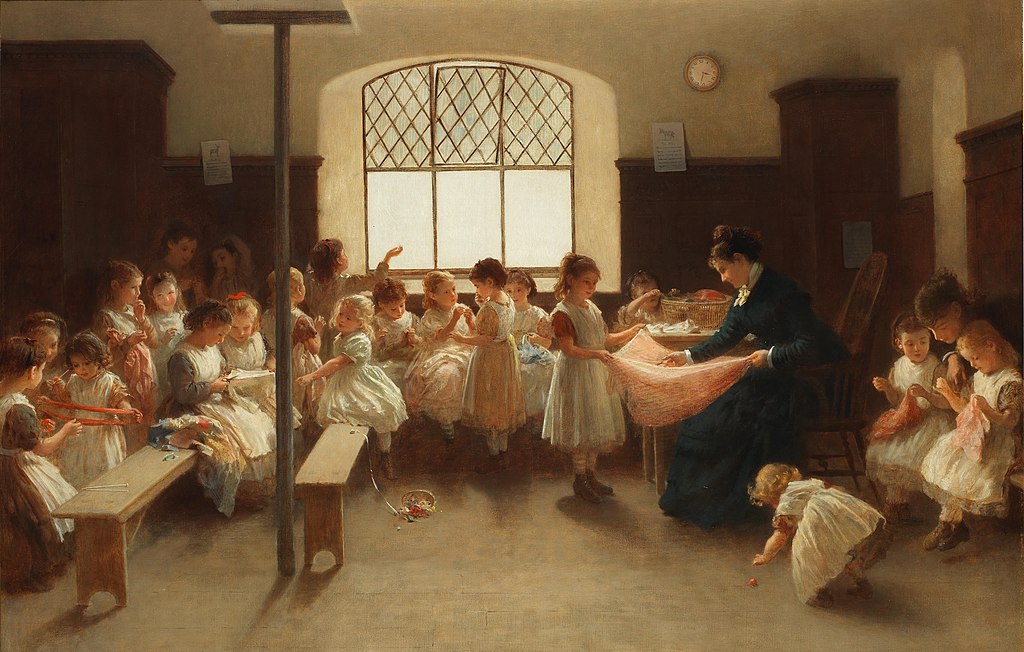
- It was also expected that women should remain chaste until marriage. In fact, they were not permitted to speak to men without a married woman accompanying them.
- Women usually married in their early to mid-20s to men around five years older than them.
- Before marriage, women were allowed to own property, but this changed after marriage, as their rights and property were passed to their husbands. This meant that husbands had complete control over their wives’ earning, property and money. Women were expected to submit to their husbands.
- Meanwhile, unmarried women, though free, were pitied and not generally accepted in Victorian society. They were criticised for failing to build a family.
Motherhood and domesticity
- While marriage was an indication of a woman’s maturity and respectability, motherhood was a confirmation that she had entered the world of womanly virtue and female fulfilment, as it was expected of a married woman.
- Once married, a woman’s place was considered to be in the home. Women, as mistress of a household, should know how to be good wives and household managers. There were several publications to guide them in this endeavour, such as Mrs Beeton’s Book of Household Management, which explained that the mistress of a household is comparable to the commander of an army or the leader of an enterprise.
- Married women from wealthier backgrounds had a range of servants to carry out the domestic chores for them, so their primary duty was to oversee them. Meanwhile, most middle-class women were only able to afford one servant, which was enough to give the woman of the house some status, but insufficient to enable her to spend her days doing hobbies.
- On the contrary, working-class women found managing domestic life more challenging. Given the poor living conditions and the lack of servants of working-class families, domestic chores for them meant a huge deal of washing and cleaning.
- Women from across the classes led completely different lives in Victorian times. The upper-class women did not need to work outside the home, employed many servants, and enjoyed more time for leisure pursuits. The middle-class women were employed as a school teacher, governess or nurse. Meanwhile, the working-class women had to find occupations to meet the financial needs of their household, and often worked as domestic servants, or in heavy industry such as coal mining and steel production, or in factories which paid small wages.
Women’s rights and movement
- In the Victorian era, women’s rights and privileges were significantly limited. While women were allowed to work, they had no rights to sue, vote or own property. Women’s rights groups focused on equality in education, work and access to electoral rights, as well as the feminist movement, began to emerge during this period but were unable to bring about much change.
Significant acts that benefited Victorian women
-
- Married Women’s Property Act of 1870
- This enabled women to keep possession only of their earnings and to inherit personal property and small sums of money.
- Married Women’s Property Act of 1882
- This allowed women to retain what they owned at the time of marriage.
- Matrimonial Causes Act of 1884
- This provided that a wife abandoned by an adulterous husband could immediately petition for divorce rather than waiting for two years.
- Custody Act of 1873
- This empowered the court to grant mothers custody of children up to age 16 and removed restrictions that prohibited women convicted of adultery from seeking custody.
- Custody of Infants Act of 1886
- This granted mothers guardianship in the event of a father’s death, but as long as the husband lived he retained authority to decide upon religion, education and upbringing of the children.
- Married Women’s Property Act of 1870
- While colleges for women opened in the 1860s and 1870s, women were not allowed to study for degree courses until the early 20th century. Additionally, the case for women suffrage was presented in the House of Commons, but women would only win the right to vote in the early 20th century.
Image Sources
- https://upload.wikimedia.org/wikipedia/commons/thumb/6/6b/Print%2C_advertisement_%28BM_1982%2CU.1521%29.jpg/800px-Print%2C_advertisement_%28BM_1982%2CU.1521%29.jpg?20200517162745
- https://upload.wikimedia.org/wikipedia/commons/thumb/a/ae/Queen_Victoria%2C_Prince_Albert%2C_and_children_by_Franz_Xaver_Winterhalter.jpg/800px-Queen_Victoria%2C_Prince_Albert%2C_and_children_by_Franz_Xaver_Winterhalter.jpg
- https://upload.wikimedia.org/wikipedia/commons/thumb/f/f2/The_sewing_class_%28unknown_date%29%2C_by_John_Morgan.jpg/1024px-The_sewing_class_%28unknown_date%29%2C_by_John_Morgan.jpg
Frequently Asked Questions
- What roles did women typically occupy in Victorian society?
Women in Victorian society were primarily expected to fulfil domestic roles, such as managing the household, caring for children, and supporting their husbands.
- How did Victorian society view women's rights and suffrage?
Victorian society generally held conservative views regarding women's rights, with limited support for women's suffrage and other feminist movements. Women were largely excluded from participating in politics and decision-making processes.
- How did social class impact the experiences of women in Victorian society?
Generally, women from wealthier families had more access to education and leisure activities, while working-class women often faced harsher conditions and limited employment options
